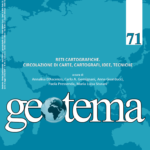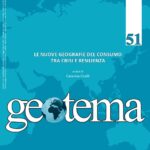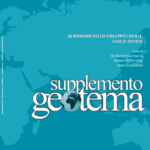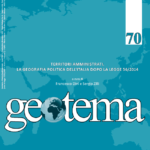Grazia Arena, Maria Sorbello
Montalbano e Gangi. Modelli sostenibili di sviluppo locale nell’era del globale
La globalizzazione potrebbe assumere un ruolo ben diverso da quello oggi tanto contestato dai no-global, determinante un’uniformità negli stili di vita, nei comportamenti e nei paesaggi che annulla quelle differenze così importanti per i turisti che sono alla ricerca delle singolarità peculiari dei luoghi. L’associazione “i borghi più belli d’Italia”, creata nel 2001 dall’ANCI mira a salvaguardare attivamente i centri minori e villaggi che, pur dotati di un patrimonio culturale e paesaggistico di grande importanza, rischiano di cadere nel degrado e nell’abbandono. E la Sicilia, per la presenza di un significativo patrimonio storico-artistico uniformemente “ spalmato” anche nelle zone più remote ed escluse dai circuiti turistici di massa costituisce senz’altro la regione in cui implementare forme corrette di un turismo durevole che inserisca questi luoghi nella rete globale. La Sicilia ha ormai ben 18 centri minori che rientrano nell’elenco dei “borghi più belli d’Italia”, dopo essere stati sottoposti ad opportuni lavori di recupero urbano e territoriale attraverso il restauro del patrimonio storico e artistico, la creazione di una più efficiente rete infrastrutturale e la creazione di nuovi itinerari turistici. Questa ricerca riguardante i borghi di Montalbano Elicona e Gangi, mira a focalizzare sia l’ impatto economico diretto che indiretto che quello turistico, dopo un’importante fase progettuale messa in atto per la rinascita di due centri storici, oggi visti come mete del turismo culturale, rappresentando una sintesi originale ed eloquente di identità territoriali locali a più livelli: architettonico, urbano, insediamento, mestieri e tradizioni. Essa è volta alla conoscenza dei progetti attuati o
da attuare per lo sviluppo sostenibile integrale dei loro territori e delle strategie vincenti per la loro inclusione nel Club dei “Borghi più belli d’Italia” diventando mete turistiche attraenti e alternative a quelle già conosciute dal turismo di massa.
Abstract: Montalbano and Gangi. Sustainable Models of Local Development in the Global Era
Globalization would assume a very different role from the one currently contested by the no-global, determining a uniformity in lifestyles, behavior and landscapes that cancels those differences so important for those who are looking for the identity peculiarities of the places. The Association «The most beautiful villages in Italy», created in 2001 by the ANCI aims to actively safeguard the smaller towns and villages that are equipped with the cultural heritage and landscape of great importance, are likely to fall into decay and abandonment. And Sicily, for the presence of a significant historical-artistic heritage uniformly «spread» even in the most remote areas and excluded from the international and national mass tourist circuits is undoubtedly the region in which to implement the correct forms of a tourisme durable able to place these «unique» places in the global network. Sicily now has as many as 18 small municipalities that fall within the list, after having been subjected to appropriate works of urban and territorial recovery, through the restoration of historical and artistic heritage, the creation of more efficient infrastructure and the creation of new tourist routes. This research related to the villages of Montalbano Elicona and Gangi, aimes to focus the direct and indirect economic impact and the tourism impact after an important planning phase put in place for the rebirth of the two historical centers, today sought after destinations of cultural tourism, representing an original and eloquent synthesis local territorial identities at multiple levels: architectural, urban, settlement, trades and traditions. It aims to the knowledge of the projects implemented or to be implemented for integral sustainable development of their territories and winning strategies that have justified their inclusion in the Club of excellence villages, becoming attractive and alternatives tourist destinations to those already known to mass tourism.
Parole chiave: Riorganizzazione, turismo, valorizzazione, sviluppo, sostenibilità, territorio
Keywords: reorganization, tourism, improvement, development, sustainability, territory









